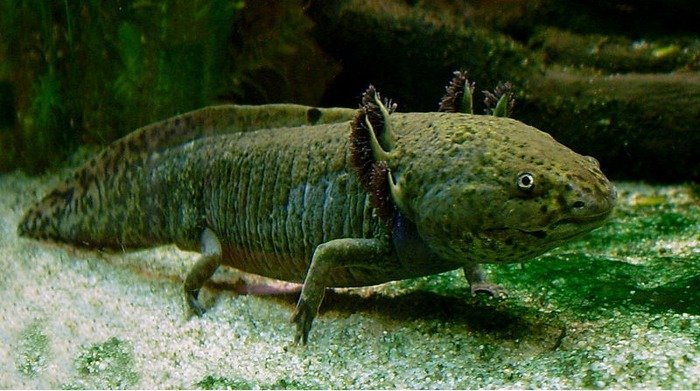Axolotl, or Mexican Walking Fish. Credit: LoKiLeCh, Wikipedia, Creative Commons.
MELBOURNE, May 14 (UPI) -- Complex, weight-bearing hips in walking animals evolved from the basic skeletons of fish more quickly than previously thought, Australian researchers say.
Tetrapods, or four-legged animals, were able to move onto land about 395 million years ago by evolving strong hipbones and a connection through the spine via an ilium -- features not present in the fish ancestors of tetrapods, they said.
But writing in the Journal Evolution and Development, researchers said an examination of the hip structures of some of humans' closest fish cousins shows the differences between humans and fish are not as great as they appear, and most of the key elements necessary for the transformation to human hips were already present in fish ancestors.
Catherine Boisvert of Monash University and her colleagues compared the hip bones and musculature of the Australian lung fish and the Axolotl, commonly known as the Mexican Walking Fish.
The comparison suggests the transition from simple fish hip to complex weight-bearing hip could be done in a few evolutionary steps, they said.
"Many of the muscles thought to be 'new' in tetrapods evolved from muscles already present in lungfish," Boisvert said. "We also found evidence of a new, more simple path by which skeletal structures would have evolved."
"The transition from ocean-dwelling to land-dwelling animals was a major event in the evolution of terrestrial animals, including humans, and an altered hip was an essential enabling step.
"Our research shows that what initially appeared to be a large change in morphology could be done with relatively few developmental steps," she said.















